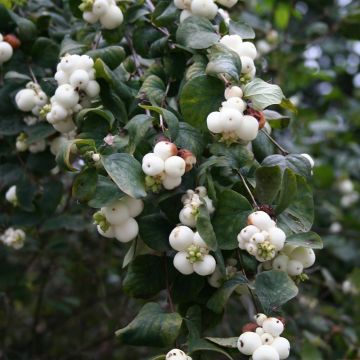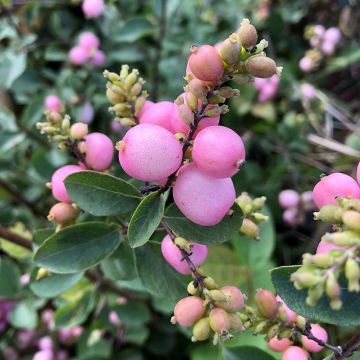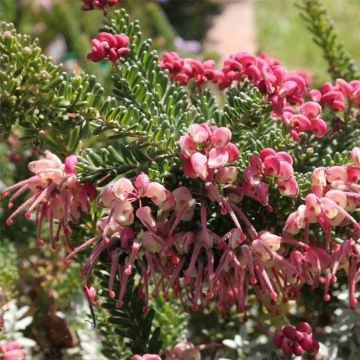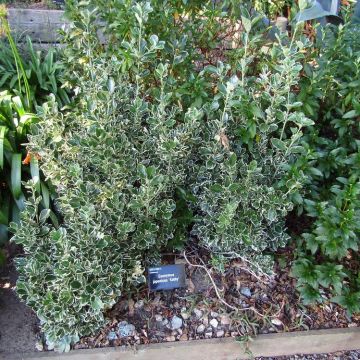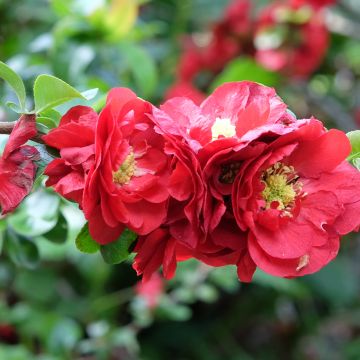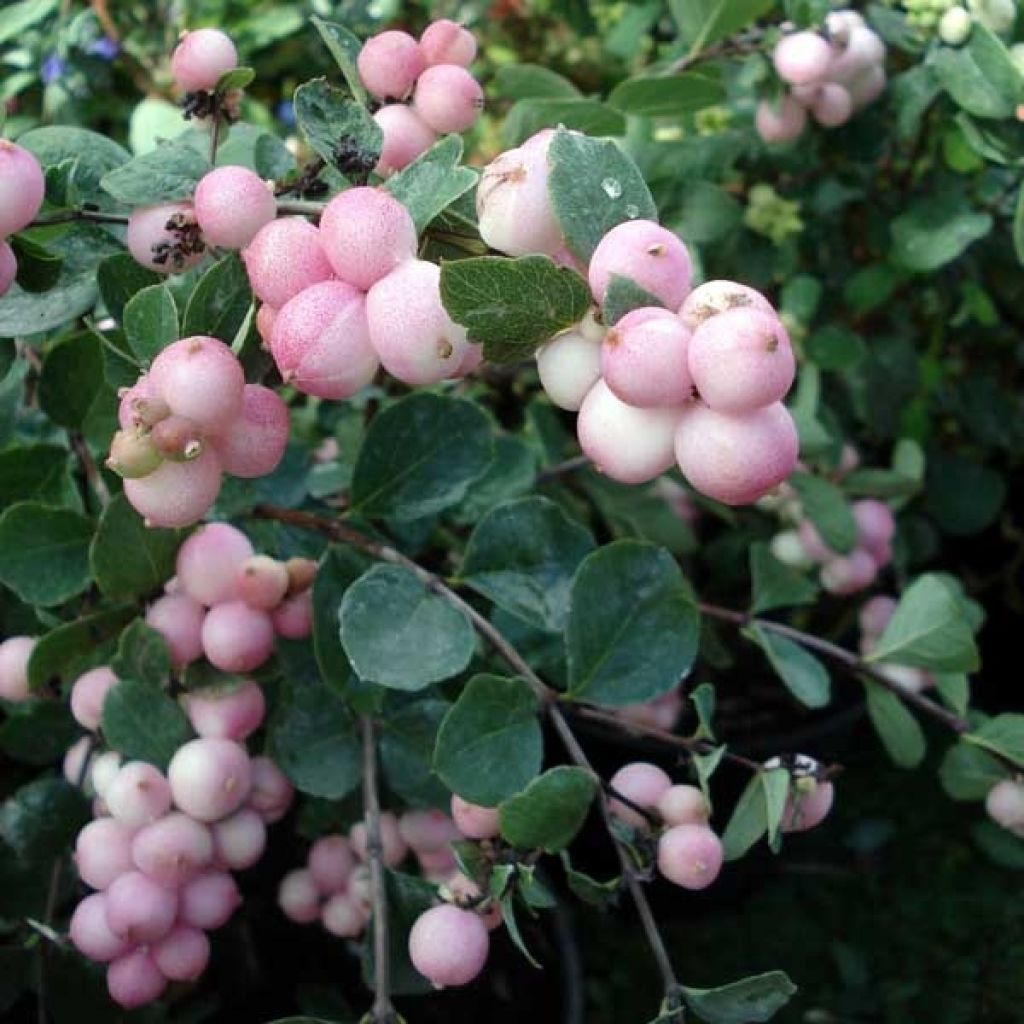

Symphorycarpos doorenboosii Mother Of Pearl
Symphorycarpos doorenboosii Mother Of Pearl
Symphorycarpos doorenboosii Mother Of Pearl
Snowberry
Small young plant as described but very vigorous. The items were very well packaged in my opinion. Great idea to staple the pots to the cardboard, they are thus secured.
Isabelle , 17/10/2024
This item cannot be shipped to the selected country
Delivery charge from €5.90
Delivery charge from €5.90
Delivery charge from €5.90
More information
Schedule delivery date,
and select date in basket
This plant carries a 24 months recovery warranty
More information
We guarantee the quality of our plants for a full growing cycle, and will replace at our expense any plant that fails to recover under normal climatic and planting conditions.
From €5.90 for pickup delivery and €6.90 for home delivery
Express home delivery from €8.90.
From €5.90 for pickup delivery and €6.90 for home delivery
Express home delivery from €8.90.
From €5.90 for pickup delivery and €6.90 for home delivery
Express home delivery from €8.90.

Does this plant fit my garden?
Set up your Plantfit profile →
Description
Symphoricarpos x doorenbosii 'Mother of Pearl' is a beautiful variety of snowberry with unique pearly pink berries. It forms a medium-sized bush, reaching about 1.50m (4.92 ft) in height and width at maturity, and will be perfect for adding a touch of magic to the garden or even the terrace, from late summer to winter. Insignificant white flowering is followed by a profusion of large round berries, pretty as pearls, gathered in clusters on the branches. 'Mother of Pearl' will fit well in the garden: in a small informal hedge, in a large bed of plants, or even on a slope and in the shade of large trees. This adorable snowberry can also be displayed in a large pot on the balcony.
The Symphoricarpos x doorenbosii is a plant from the caprifoliaceae family resulting from the cross-breeding between the Symphoricarpos albus var.laevigatus, native to the Eastern Rocky Mountains in the U.S.A, and the S.chenaultii, a horticultural hybrid. All these plants are perfectly cold-resistant, have remarkable adaptability and can withstand a wide range of soils.
The 'Mother of Pearl' snowberry forms a deciduous suckering bush with rapid growth. Reaching about 1.50m (4ft 11in) in height and width at maturity, it spreads laterally without a limit. Its habit is rounded, dense and compact, supported by upright, well-branched stems that arch over time. The deciduous foliage emerges in spring and falls in autumn and consists of small ovate leaves measuring 2 to 4cm (0.8 to 1.6in) in length. Dark green on the upper side, they are lighter on the underside and turn yellow before falling. The inconspicuous flowering attracts pollinating insects. It takes place from late May to August, in the axils of the leaves, in the form of clusters of small white-greenish to light pink bell-shaped flowers. After pollination this gives way from September to round and spongy fruits measuring 1.5 to 2cm (0.6 to 0.8in) in diameter, of a pearly white-pink colour. These beautiful berries often last until January. Non-edible for humans, they are however appreciated by birds.
This 'Mother of Pearl' snowberry is a resistant and extremely hardy bush, capable of adapting to many growing conditions. It easily integrates into an informal hedge or a large shrub bed in a garden that encourages nature. Many other deciduous or evergreen shrubs, with flowers or berries, will accompany it: spireas, viburnums, lilacs, shrubby honeysuckles, cotoneasters, elaeagnus, botanical roses, euonymus, ornamental cherries and apples, hawthorns, Berberis... You can even grow the Mother of Pearl snowberry in a pot on your terrace. Its fruit-laden branches can also be used to create beautiful autumn bouquets.
Report an error about the product description
Plant habit
Flowering
Foliage
Botanical data
Symphorycarpos
doorenboosii
Mother Of Pearl
Caprifoliaceae
Snowberry
Cultivar or hybrid
Other Symphoricarpos
Planting and care
Symphoricarpos adapts to all exposures and many climates: it tolerates shade but will be more floriferous and fruit-bearing in partial shade or non-scorching sun. It is a hardy and easy-to-grow bush that is suitable for any good garden soil, limestone, neutral or slightly acidic. It even tolerates wet or dry soils in summer and will grow under large trees and at the base of hedges. Prune in late winter to maintain balance.
Planting period
Intended location
Care
-
, onOrder confirmed
Reply from on Promesse de fleurs
Hedge shrubs
Haven't found what you were looking for?
Hardiness is the lowest winter temperature a plant can endure without suffering serious damage or even dying. However, hardiness is affected by location (a sheltered area, such as a patio), protection (winter cover) and soil type (hardiness is improved by well-drained soil).

Photo Sharing Terms & Conditions
In order to encourage gardeners to interact and share their experiences, Promesse de fleurs offers various media enabling content to be uploaded onto its Site - in particular via the ‘Photo sharing’ module.
The User agrees to refrain from:
- Posting any content that is illegal, prejudicial, insulting, racist, inciteful to hatred, revisionist, contrary to public decency, that infringes on privacy or on the privacy rights of third parties, in particular the publicity rights of persons and goods, intellectual property rights, or the right to privacy.
- Submitting content on behalf of a third party;
- Impersonate the identity of a third party and/or publish any personal information about a third party;
In general, the User undertakes to refrain from any unethical behaviour.
All Content (in particular text, comments, files, images, photos, videos, creative works, etc.), which may be subject to property or intellectual property rights, image or other private rights, shall remain the property of the User, subject to the limited rights granted by the terms of the licence granted by Promesse de fleurs as stated below. Users are at liberty to publish or not to publish such Content on the Site, notably via the ‘Photo Sharing’ facility, and accept that this Content shall be made public and freely accessible, notably on the Internet.
Users further acknowledge, undertake to have ,and guarantee that they hold all necessary rights and permissions to publish such material on the Site, in particular with regard to the legislation in force pertaining to any privacy, property, intellectual property, image, or contractual rights, or rights of any other nature. By publishing such Content on the Site, Users acknowledge accepting full liability as publishers of the Content within the meaning of the law, and grant Promesse de fleurs, free of charge, an inclusive, worldwide licence for the said Content for the entire duration of its publication, including all reproduction, representation, up/downloading, displaying, performing, transmission, and storage rights.
Users also grant permission for their name to be linked to the Content and accept that this link may not always be made available.
By engaging in posting material, Users consent to their Content becoming automatically accessible on the Internet, in particular on other sites and/or blogs and/or web pages of the Promesse de fleurs site, including in particular social pages and the Promesse de fleurs catalogue.
Users may secure the removal of entrusted content free of charge by issuing a simple request via our contact form.
The flowering period indicated on our website applies to countries and regions located in USDA zone 8 (France, the United Kingdom, Ireland, the Netherlands, etc.)
It will vary according to where you live:
- In zones 9 to 10 (Italy, Spain, Greece, etc.), flowering will occur about 2 to 4 weeks earlier.
- In zones 6 to 7 (Germany, Poland, Slovenia, and lower mountainous regions), flowering will be delayed by 2 to 3 weeks.
- In zone 5 (Central Europe, Scandinavia), blooming will be delayed by 3 to 5 weeks.
In temperate climates, pruning of spring-flowering shrubs (forsythia, spireas, etc.) should be done just after flowering.
Pruning of summer-flowering shrubs (Indian Lilac, Perovskia, etc.) can be done in winter or spring.
In cold regions as well as with frost-sensitive plants, avoid pruning too early when severe frosts may still occur.
The planting period indicated on our website applies to countries and regions located in USDA zone 8 (France, United Kingdom, Ireland, Netherlands).
It will vary according to where you live:
- In Mediterranean zones (Marseille, Madrid, Milan, etc.), autumn and winter are the best planting periods.
- In continental zones (Strasbourg, Munich, Vienna, etc.), delay planting by 2 to 3 weeks in spring and bring it forward by 2 to 4 weeks in autumn.
- In mountainous regions (the Alps, Pyrenees, Carpathians, etc.), it is best to plant in late spring (May-June) or late summer (August-September).
The harvesting period indicated on our website applies to countries and regions in USDA zone 8 (France, England, Ireland, the Netherlands).
In colder areas (Scandinavia, Poland, Austria...) fruit and vegetable harvests are likely to be delayed by 3-4 weeks.
In warmer areas (Italy, Spain, Greece, etc.), harvesting will probably take place earlier, depending on weather conditions.
The sowing periods indicated on our website apply to countries and regions within USDA Zone 8 (France, UK, Ireland, Netherlands).
In colder areas (Scandinavia, Poland, Austria...), delay any outdoor sowing by 3-4 weeks, or sow under glass.
In warmer climes (Italy, Spain, Greece, etc.), bring outdoor sowing forward by a few weeks.

































